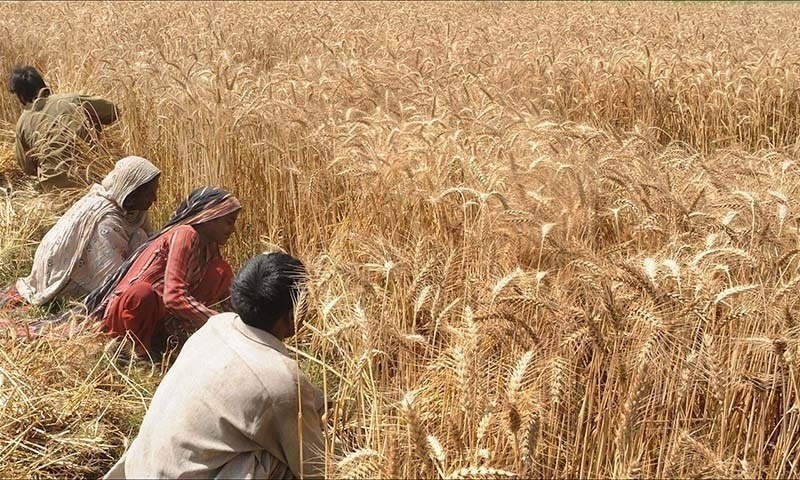ISLAMABAD: Pakistan witnessed record wheat production during the fiscal year 2020-21, with Punjab and Khyber Pakhtunkhwa producing more than the estimated figures, the government announced on Monday.
Against the estimated production of 27.33 million tonnes, the country produced 27.539m tonnes of wheat, according to the final figures shared during a meeting of the wheat review committee at the Ministry of National Food Security and Research.
The overall wheat production has increased as the estimated wheat production in Khyber Pakhtunkhwa crossed the benchmark of 1.25m tonnes to reach 1.459m tonnes. The highest production of wheat was registered in Punjab, where 20.9m tonnes of wheat was produced against the estimated production of 20m tonnes.
The meeting was held between the federation and the provinces, including Gilgit-Baltistan, as well as Azad Jammu and Kashmir, months before the cultivation of wheat crop to strategically plan for efficient production of wheat in the next food year (2021-22).
Minister for National Food Security and Research Syed Fakhar Imam chaired the meeting which was attended by the provincial agriculture secretaries, representatives of the provincial food departments, the Pakistan Agricultural Storage and Services Corporation (Passco) managing director and senior ministry officials.
The meeting was informed that 50 per cent of seed requirement was certified last year and an even better figure was expected this year.
Passco was directed to transfer stock to Gilgit-Baltistan, Azad Jammu and Kashmir and Khyber-Pakhtunkhwa to ensure continuity in the demand and supply chain.
Meanwhile, the Department of Plant Protection succeeded in getting approval of seven more rice establishments for rice export to China.
With the latest addition, the total number of rice establishments has increased from 46 to 53.
Rice contributes 3.5 per cent of value-addition to agriculture and 0.7pc to the country’s GDP. Its production comprises basmati (fine) and coarse types. In recent few years, production of coarse types is on the rise.
During 2020-21, the crop was cultivated on 3.335m hectares, reflecting an increase of 9.9pc as compared to last year’s sown area of 3.034m hectares.
Published in Dawn, July 6th, 2021














































